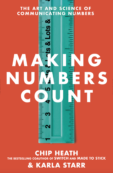I conducted a workshop recently for high school science and math teachers. We were working together to find ways to make their lesson plans stickier. My favorite example came from a couple of teachers who were trying to revamp the oceanography unit. Below is my own paraphrasing of what they said:
“We weren’t happy with how our unit on oceanography went last year. So we’ve put a lot of energy into how to make it better. Here’s what we’ve come up with.
In the first class in the unit, we start with a mystery: Let’s say you put a message in a bottle, drive out to the coast, and throw it as far as you can into the ocean. Where will the bottle end up? We let students make their guesses. (‘The waves will bring it right back to shore.’ ‘It’ll end up in Antarctica.’ ‘It’ll sink.’ Etc.) But we don’t give an answer (since there isn’t a clear answer).
Then we began to explore this same mystery in a more dramatic form. We’ll have students read a wonderful article from Harper’s magazine. What happened is this: In January 1992, somewhere in the Pacific Ocean, a cargo ship hit a severe storm lost a container overboard which held 7,200 packages of plastic toys, including thousands of rubber duckies. Years later, we know where many of these rubber duckies ended up. In fact, many of them ended up on the same beach! By tracing the paths that these duckies swam, we learn a lot about the way ocean currents work.
Next, we let the kids do some hands-on experimentation. We’ll set up tanks of water with different salinities and different temperatures, and let them see how those variables change the water current. In essence, we are letting them create their own ocean currents.
Finally, we’ll pivot to the critical role that oceans play with global climate. We’ll start by asking them: What determines the weather of a city, like New York City? Inevitably, students say it depends on the latitude of the city ‘ the closer to the equator the city is, the warmer it is, and the closer to the poles it is, the colder it is. There is much truth to that, but there are huge discrepancies: For instance, New York City and Madrid are at roughly the same latitude. Yet it snows every winter in NYC and doesn’t snow in Madrid. What’s the difference? That paves our way to talk about the way that ocean currents influence climate.
We will be trying this ‘new & improved’ sequence this fall, and we’re hopeful it will make the unit much more vivid for students!”



